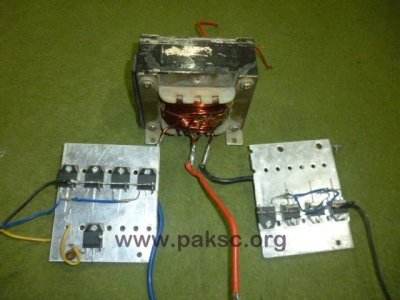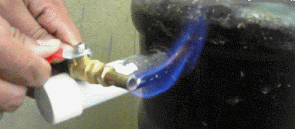BioGas Digester Home Experiments For Kids
 |
| BioGas Plant Digester Home Experiments for students |
This is a contribution of home experiments, that is sure to be very useful:
Procedure:
1) use a container in square or cylindrical concrete, iron or clay and place it outdoors in the sun.
2) The lid of the container (concrete, iron or plastic) must be crossed by a tube to the outlet of the bio-gas. A water seal as shown in the figure does not let the gas escape.
3) Fill the container of wet products (manure, organic wastes such as straw, dead leaves, etc)
4) You must leave an empty space between the waste and cover, plus or minus 1 / 4 of total volume.
5) Keep it uncovered for 10 days, you should remove it every day.
6) Now, you must set the cap, starting the process of fermentationwithout air (anaerobic)
7) After ten days the methane gas (
biogas) invade the space above the waste and can be used for 50 days for heating elements in the kitchen.
8) After this period, empty the digester will be charged again for another cycle.
9) The waste make excellent fertilizer for crops
Biogas Experiments For Kids -
How does a biogas plant?
In the agricultural
biogas plants are used to generate energy from waste.What happens there?
A biogas system in agriculture – an image which we see future perhaps more frequently
Are organic compounds made of air, then they begin to decompose, then they say, they “rot”. That may be dead plants, but also dead animals.These bacteria are responsible for decomposition, which have specialized to live without oxygen. Therefore they are called in experts “anaerobic” bacteria.
As products of this decomposition, a mixture of methane and carbon dioxide and other gases in small amounts. It is also formed less than 1% hydrogen sulphide.
The described decomposition process takes place everywhere in nature where naturally adjusts itself to an air termination, including swamps, or dunghill. In addition to the gases formed as a reaction product also digested sludge.
How does a biogas plant?
The natural decomposition processes in nature are the inspiration for
modern biogas plants. The starting materials are first into a vat, or “digester” called. Remain in that fermenting the raw materials for several days. The bacteria do their work and degrade these substances, it constantly creates biogas. To increase the effectiveness, the starting materials in the fermentation tank are stirred.
The resulting biogas is cleaned and dried. To use, it must be saved. The speed of decomposition and thus the
biogas production also depends on the temperature inside the digester, so it is heated to temperatures around 40 ° C. After the decomposition of biomass residues are fermented into a sludge tank.
What raw materials are used in a biogas plant?
There are basically all types of waste biomass. These include liquid manure (“manure”), solid manure, agricultural waste, slaughterhouse waste, green waste, food waste from restaurants or the content of the widespread urban organic waste bins.
What to do with the resulting biogas?
The
methane in biogas is one caused by burning fuels dar. its energy is converted into heat energy. This allows combustion engines converted to operate, which in turn use a generator to produce electricity. The resultant residual heat (“heat”) can be used as domestic heating, agriculture, or used to heat the digester.
What happens to the Bioren from the sludge tank?
This biomass can be used in agriculture as fertilizer. Because it forms when spread on fields no longer smells, the acceptance of such fertilizers is very high. During the decomposition of the starting materials and the seeds of weeds are killed, what is the fertilizer with the remaining mass is desired.
Biogas plants also have disadvantages?
Yes. Biogas is very toxic and explosive. Improper handling of the biogas and non-compliance with requirements for plant safety are risk factors in the operation of such facilities. It came in the past to serious accidents in
biogas plants, some of fatalities. Even the technology used in some cases not mature, it was already too explosions with injuries of those involved.








































